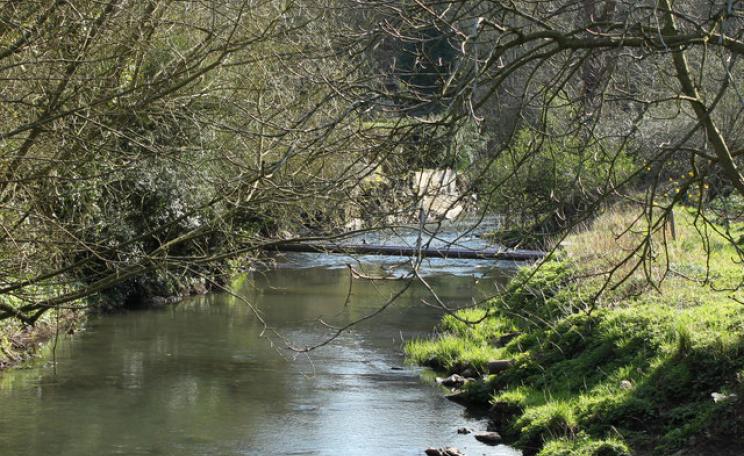The connection between hard-partying celebrities – from A-list to F – and the Revolutionary Armed Forces of Colombia (FARC) might not be immediately apparent to most. But then the free-market makes strange bedfellows of us all. The twin desires to usurp the existing Colombian power-base on the one hand, and maintain the illusion of bright-lights, big-city careers on the other, have collided to throw the spotlight on a largely ignored form of ecocide.
As controllers of the majority of Colombia’s cocaine production for more than a decade, FARC has been responsible for the slash and burn of more than two million hectares – an area the size of Wales – of both pristine primary- and secondary-growth Amazon rainforest, in the most biodiverse (per square kilometre) country in the world.
As controllers of a large majority of the public’s imagination, celebrities who either openly or clandestinely take cocaine are helping ensure that the Colombian coca farmers who work for FARC stay in business.
The mind boggles at how the ideologies of such diverse groups could find themselves on common ground, but it seems that when it comes to the environment, neither can see beyond the tip of their noses. It’s estimated that four square metres of rainforest are required for the production of every one gram of cocaine. More worrisome is that for every hectare of coca planted, approximately three to four hectares of forest are actually cut down.
The thinly veiled euphemism for cocaine use – ‘partying hard’ – often cited in the tabloids, suggests it is a drug of choice for celebrities. Since his agent refused to take our call, we cannot be sure that when Elton John quipped to Lily Allen, at the GQ magazine Men of the Year Awards last year, that he could ‘snort her under the table’, he wasn’t talking about tobacco snuff.
If, however, hypothetically, he was talking about cocaine – and according to an interview in the Observer in 2004, Sir Elton, at his peak, was taking cocaine every four minutes – then it begs the question, just how much pristine rainforest does it take for one A-lister to snort another A-lister under the table? Are we talking a parcel of land the size of the back garden of a terraced house? A tennis court’s worth? Or more?
Moreover, do we assume that the donations and endorsements given by some hard-partying celebrities to environmental and conservation charities are in fact some perverse form of carbon offsetting?
It may seem facetious to lay the blame for rainforest ecocide squarely at the feet of Hummer-driving, private jet-setting, cocaine-tooting celebrities. And certainly, ignorance of the complexity of our carbon footprint is not their exclusive preserve.
As entertainer Graham Norton commented in Marie Claire magazine, cocaine is the ‘middle-class choice of drug’ (his views about drugs were heavily criticised by NGOs such as the National Drug Prevention Alliance and DrugScope, but vigorously defended by the BBC). Like many other drugs, hardcore cocaine addicts make up a minority of users; the vast majority are recreational users, from a broad spectrum of society, and quite likely also include middleclass, broadsheet-reading, environment-supporting greens, not to mention members of the media. A few years ago singer Robbie Williams was widely reported as claiming to have taken cocaine with the same journalists who were hounding Kate Moss at the time for her own use of the drug.
The latest figures from the European Monitoring Centre for Drugs and Drug Addiction reveal that across Europe an estimated 12 million EU citizens aged 15-64 have taken cocaine. More revealing is that the UK has the highest number of cocaine users, and that nearly 13 per cent of Britons aged between 15-34 had taken the drug.
With the Home Office suggesting that a line of cocaine can cost as little as £1 – less than a cup of coffee – perhaps the Heathrow runway campaigners should be maximising their impact by decamping in the early hours to protest outside London’s most exclusive nightclubs.
Being accountable
Whatever your background, whether celebrity or Jain monk, sweeping the path before you to avoid treading on any insects, every choice is a complex one.
The cocaine I experimented with in the late 1980s was more likely sourced from Peru than Colombia, but the chemicals used in its production would have been the same. These include pesticides and herbicides such as Paraquat, banned in the EU, and the tens of millions of gallons of kerosene, sulphuric acid, acetone, cement and other pollutants that get dumped each year, straight on to the ground and into nearby rivers, damaging plant, animal and aquatic wildlife.
Life in the spotlight comes with certain responsibilities, however. When it comes to the potential impact of celebrities’ brazen promotion of drug-taking, their ‘lifestyle’ choices and their ignorance of the environmental consequences of their actions, they must be held to account. Especially since their use perpetuates the destruction of still more rainforest through the influence they have on young people.
Last year’s annual report of the International Narcotics Control Board – a UN agency – highlighted for the first time the influence of drug-taking film actors, sports stars and rock musicians on impressionable fans. The report noted: ‘Celebrity drug offenders can profoundly influence public attitudes, values and behaviour towards drug abuse, particularly among young people who have not yet taken a firm and fully informed position on drug issues.’
It also blamed law enforcement agencies for treating stars ‘leniently’ and failing to make an example of them. Professor Hamid Ghodse, a member of the board, said: ‘They get more lenient responses by the judiciary and law enforcement, and that is regrettable. Not only does it give the wrong messages to young people, who are often quite impressionable, but the wider public become cynical about the responses to drug offenders.’
Alun Morinan, a scientific advisor to Hope UK, a preventative drugs education charity, says: ‘When you see these free London newspapers, with pictures of celebrities falling out of nightclubs and then into rehab as something they can drop in and out of, as if it’s an MOT, it’s presented as a lifestyle that young people look up to.’
Stemming the supply
We rightly believe that it is the duty of governments to protect citizens from illicit drugs by stemming their supply at source, and when it comes to cocaine there’s no shortage of ideas.
Initiatives such as the US-backed, $600 million a year Plan Colombia (the dire environmental consequences of which were detailed in the Ecologist in March 2006), a campaign of aerial spraying coca plants with glyphosate (Monsanto’s RoundUp) – in scenes reminiscent of the spraying of foliage in Vietnam with Agent Orange.
However, while the Colombian government claims to be increasing manual eradication of coca – in 2007 it estimated that 66,000 hectares was removed by hand – when plantlife is seen as a national security threat it’s inevitable that more aggressive measures will also be applied. Professor Jaime Fernando González of the Universidad Nacional de Colombia, an expert on the effects of glyphosate on river fisheries, likened the environmental effects of Plan Colombia to the use of chemotherapy against cancer.
A recent US Congressional report suggested that despite record aerial eradication and the diminution of the threat of FARC, Plan Colombia did not stop coca cultivation in Colombia rising by 15 per cent between 2000 and 2006. Eradication efforts are thwarted by farmers using improved cultivation techniques, the planting of new herbicideresistant varieties of coca bush and increased processing efficiency.
Social programmes have been set up too, such as the UN-sponsored programme Familias Guardabosques (forest wardens), which provides employment and alternative income opportunities through the sustainable use of environmental goods and services to communities that make a commitment to maintaining coca-free zones in areas where eradication has previously occurred. The programme has been successful for some of Colombia’s 60,000 coca-growers, but is not accessible to the majority, who otherwise might still choose to grow the plant.
The simple fact remains that demand for cocaine incorporates coca-growers into the global economy in a way other subsistence crops – crops people can eat – don’t. Colombian farmers grow coca because they know there is a valuable market where they can sell it for more than they can get for other crops. What they get doesn’t make them rich, but coca clearly offers them a better income for their families.
As Liliana M Dávalos, assistant professor at the Consortium for Inter-Disciplinary Environmental Research at Stony Brook University, New York, says: ‘Successful eradication efforts require sustained investments over decades, and direct engagement with growers. Thailand and the Lao People’s Democratic Republic,
for instance, reduced their opium production dramatically by reaching out to growers, luring them away from marginal lands with schools, roads and medical centres, as well as guaranteeing technical support, sponsoring farmers’ co-operatives and virtually ensuring the purchase of legal agricultural products.
Indeed, there are those who believe that Colombian vicepresident Francisco Santos Calderón’s Shared Responsibility campaign, through which the environmental consequences of cocaine have become more widely known, is nothing more than a public relations exercise, designed to shift attention away from the well-intentioned but haphazard approach to tackling supply described above.
Heavy-handed though it may be, the fact remains that the Colombian government is right to have highlighted the connection between individuals’ cocaine consumption and the ecocide of the Amazon rainforest. After all, as Calderón admits, even if attempts were successful in stemming supply, while demand remains, supply would inevitably move elsewhere. As when you press down on a balloon full of water, the water simply bulges towards the opposite side.
Cocaine usurped coffee as a national crop in Colombia in the first place after production migrated from Peru because the government there started indiscriminately shooting down light aircraft suspected of trafficking. Already New Guinea, an established cocaine transhipment point in West Africa, with lax infrastructure and lush rainforest that provides ideal growing conditions, is being touted as the next Colombia.
We need to focus on demand as much if not more than supply, because while demand remains, suppliers will be pushed to ever more extreme measures to fulfil supply, with inevitable consequences for the environment. This is true of almost all recreational drugs (see below).
A new view on prevention
If governments’ attempts to eradicate supply simply add insult to environmental injury, and if the will of suppliers is such that they will always find a way to meet demand, then we must consider a new approach to combating demand.
In drugs education, for example, the environmental impact of drug use offers an opportunity to engage children at a much deeper level – especially those more likely to switch off from arguments about health and mental wellbeing.
This is exactly what the most recent Government guidance, entitled Drugs: Guidance for Schools, states: that drug education should allow all children an opportunity to explore their attitudes towards drugs and help them to develop skills to make informed choices, rather than simply focusing on improving their knowledge and understanding.
Siobhan Farmer, a Healthy Schools Consultant for St. Helens Council in Lancashire, says that while it won’t work for every child, examining the environmental consequences of recreational drugs presents many opportunities for teachers and pupils to be more creative in how they explore the role of drugs in today’s society: ‘Learning about drugs can be linked to wider curriculum subjects such as citizenship (including politics and rights and responsibilities), geography, biology and sociology.’
What if children were asked, for example, to consider the impact of cocaine use on the recently discovered gold frog, the size of your fingernail, whose habitat of just 42 acres is in the remote mountains of Colombia? Or the recently discovered Gorgeted Puffleg hummingbird, which only lives on some 1,200 hectares in the cloud forests of southwestern Colombia and is predicted to disappear within two years?
What conversations might arise from understanding the impact of ecstasy use on the tigers, pangolins, peacocks, pythons and wild cats trapped for food or sold illegally by the people who run the sassafras oil distillation camps in the Cardamom mountains of Cambodia? With these facts at their fingertips, might at least some children view drugpromoting celebrities in a different, less deferential light?
To ensure the emphasis on the environment is not lost on them, however, the low self-esteem among some children that sees them looking up to drug-endorsing celebrities in the first place, must also be tackled. As John Naish writes in his book Enough: Breaking free from the world of more, some people view celebrities as the alpha members of our virtual tribe, and our instincts urge us to imitate their every habit in hope of gaining entry to their VIP circle. More worrisome is that we perpetually fear being snubbed by such alphas.
Recreational vs dependent?
Making the environmental consequences of recreational drug use more widely known would also offer governments and drug education charities a chance to challenge the excuse of many users that since they are not dependent, somehow their use harms no-one and so it’s okay to continue.
Might we imagine a future society in which Earth jurisprudence was firmly established within the legal framework, and where cocaine-snorting celebrities, even self-exposed ones such as mezzo soprano Katherine Jenkins, might be heavily fined, or even banned from performing?
Though it may sound far-fetched, the trial of Greenpeace protesters, acquitted last September of causing criminal damage to Kingsnorth power station, sets an important precedent. The judge ruled that the protest was reasonable given the potential future harm to the environment that the coal-fired power station could cause. By the same token, the use of recreational drugs on its current scale also constitutes genuine future harm to people and ecosystems.
If recording artists such as Lily Allen knew they risked fines such as those imposed on ex-Chelsea footballer Adrian Mutu – who was ordered by FIFA to pay the club £13.68 million in compensation after he tested positive for cocaine while playing there – would they think twice about spouting off about their right to party hard?
In the meantime, we could do no worse than consider a new system of drugs classification that considers the overall impact of drugs, instead of one that invites people to use it as a guide to the potential harm of a drug to their health.
But, says Alun Morinan, ‘We would need to avoid this being misinterpreted as the equivalent of food labelling – and so inviting people to use it as further justification for their drug choices – but presenting the full range of facts, including environmental, is critical.’
Lifestyle choices
For many users, drugs are a way of escaping the harsh realities of modern life on the poverty line, or even just to let go of the stress of the 9-to-5 grind. Drugs are moodaltering, and for many there’s not a lot to cheer about in the modern world – not least the looming threat of climate change. Even when the outlook is bleak we cling to our right to be happy.
As Elizabeth Farrelly, author of Blubberland: The Dangers of Happiness, says so succinctly: ‘In popular culture, the gratification compulsion chugs on. For most of us, religion is in the reject pile, and the Enlightenment a disappointment, but the pursuit of happiness through pleasure survives as the supreme orthodoxy of our times.’
But all that has to change.
The impact of crystal meth production and an industrialised approach to marijuana cultivation are seemingly less critical, as far as global warming is concerned, but there are clear links between the use of cocaine (and by consequence crack) and ecstasy, and the diminution of valuable rainforest. These are the same forests that new research published in Nature by Dr Simon Lewis, a Royal Society research fellow at the University of Leeds, suggests are responsible for absorbing some 18 per cent of the CO2 that burning fossil fuels adds to the atmosphere each year, substantially buffering the rate of climate change.
The impact on the environment of opium production in Afghanistan (responsible for more than 90 per cent of the world’s heroin supply) is less easy to establish, and yet being a key source of funding to the Taliban, in the same way coca funds FARC, it is implicit in the environmental consequences of the war itself. More than half the forests in three Afghan provinces have been destroyed in 25 years of war in the region.
Unless governments suddenly decide to offer drugs on prescription from sustainable sources of supply, or institute an organic standard for them, it falls to individual drug users to reconsider the ominous threat to the environment of their habits.
That will rely on governments willing to communicate that message, but it also will rely on governments to consider how to create a society in which people feel sufficiently valued for their contribution, so they’re less prone to seek ways of artificially altering their experience of reality in the first place. Part of this cultural shift, as Elizabeth Farrelly suggests, will mean that we begin to learn the difference between what we want and what is right.
Nick Kettles is freelance writer and creative consultant
Cannabis
Tales from California, where cannabis (marijuana in the US) is grown illegally in national parks, are instructive. Since 2000, authorities at Sequoia and Kings Canyon National Parks have found as many as 50,000 cannabis plants each year –at best half of what is being grown – planted on illegal grow-sites, and disrupting the land and wildlife on hundreds of acres of wilderness. A 7,000-plant crop can yield a street value of $28 million.
• Growers elsewhere in the world indiscriminately clear grow-sites and show little respect for the environment. Run-off from pesticides and herbicides, including DDT, poses risks to wildlife, plantlife and aquatic life nearby.
• Arsenic-based poisons are used to kill small animals and rodents, which in turn can devastate the food chain and area water supplies.
• Drugs cartels protect their grow-sites with firearms, including AK47s, used to warn off other growers seeking to move in on the site, but also to protect them from bears and other wildlife.
• In Europe, where cannabis is more likely to be grown in artificial, hydroponic environments, chemicals such as hormones are added to increase yields and then simply flushed down the toilet or the drain.
• More than 60 per cent of the cannabis smoked in Britain is cultivated in this country, compared with just 11 per cent a decade ago.
Crystal methamphetamine
Among the thousands of makeshift labs discovered in the US, hazardous byproducts from crystal meth production have been found dumped directly into domestic water wells, down mine shafts and on to farmland, posing immediate environmental effects and creating broader public health risks from contaminated water.
• To produce every 1lb (2.2kg) of crystal meth 5-6lb 11-13kg) of hazardous waste is generated.
• This includes red phosphorous, known to be harmful to aquatic organisms, and iodine, which even at low doses, as little as a couple of grams, can be fatal.
• When the Government recently upgraded crystal meth from class B to class A, following advice from Advisory Council on the Misuse of Drugs, it took into account, among other reasons, the environmental impact of the chemicals used in its production.
Ecstasy
Writing in the Journal of Psychopharmacology recently, Professor David Nutt, head of the Advisory Council on the Misuse of Drugs, trivialised the use of ecstasy by comparing the statistical risk of being killed by it to horseriding, but it still poses huge risks to the environment.
• The purest form of Safrole, which comes from sassafras oil, commonly used to make toiletries and a precursor in the production of ecstasy, is secured from endangered Mreah Prew Phnom trees, which grow in the Cardamom mountains, in Cambodia.
• The Cardamom mountains are the largest intact piece of tropical rainforest in mainland south-east Asia, with phenomenal biodiversity and where seven or eight new species are discovered each year.
• In June last year, 33 tonnes of sassafras oil, which Fauna & Flora International (FFI) helped to confiscate, were destroyed at a public ceremony organised by the Cambodian government and the Australian Federal Police (AFP). The AFP claims that the oil could have produced 245 million ecstasy tablets with a street value of $7 billion.
• Cutting down Mreah Prew Phnom trees also puts at risk the cardamom trees, which grow best in their shade and which provide a source of income to local indigenous spice traders.
• Still more trees are cut down to heat the distillery vats in which the roots of the Mreah Prew Phnom tree are boiled for up to 12 hours to obtain sassafras oil. Vat oil often leaks into nearby streams, killing aquatic wildlife.
Tobacco
Tobacco, believed by some researchers to be as addictive as heroin, also has a devastating effect on the environment. By 2010 it is predicted that 87 per cent of the world’s tobacco will be grown in the developing world. Available data suggests:
• Tobacco accounts for five per cent of Africa's total deforestation
and 20 per cent of deforestation in Malawi. Tanzania also faces a
wood shortage as a result of tobacco-growing.
• Globally, tobacco curing requires 11.4 million tons of solid wood
every year. In developing countries producers still rely on readily
available, unregulated wood supplies from forests.
• Less direct impacts on forests include the paper used in cigarette manufacture. A modern cigarette manufacturing machine can use up to 3.7 miles of paper an hour.
• Tobacco plants strip more nutrients from the soil – especially
potassium – than many other crops.
• Vast quantities of pesticides, fertiliser and herbicides are used. Tobacco crops can be given more than a dozen applications during their three-month growing period.
• Trillions of cigarette butts are discarded each year. The plastic-like material can take up to 15 years to break down, all the while releasing toxins into the environment.
This article first appeared in the Ecologist May 2009







